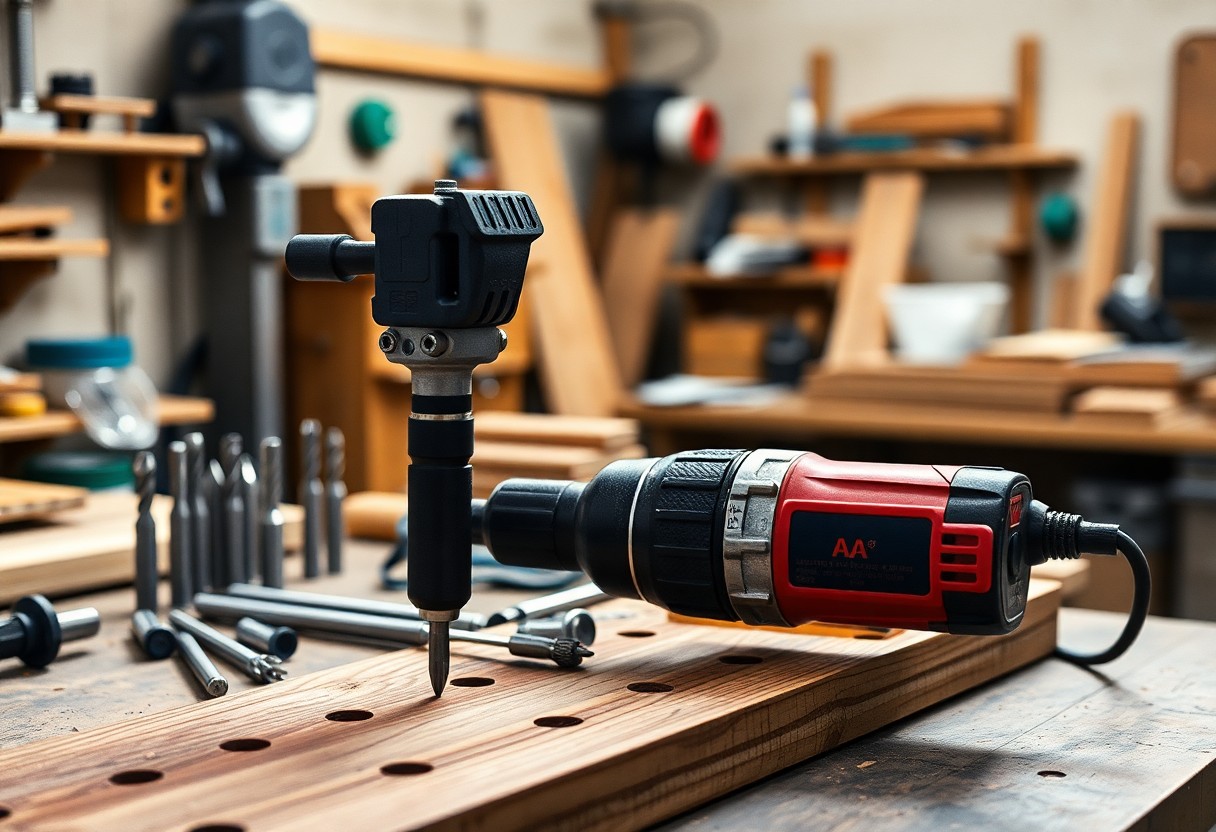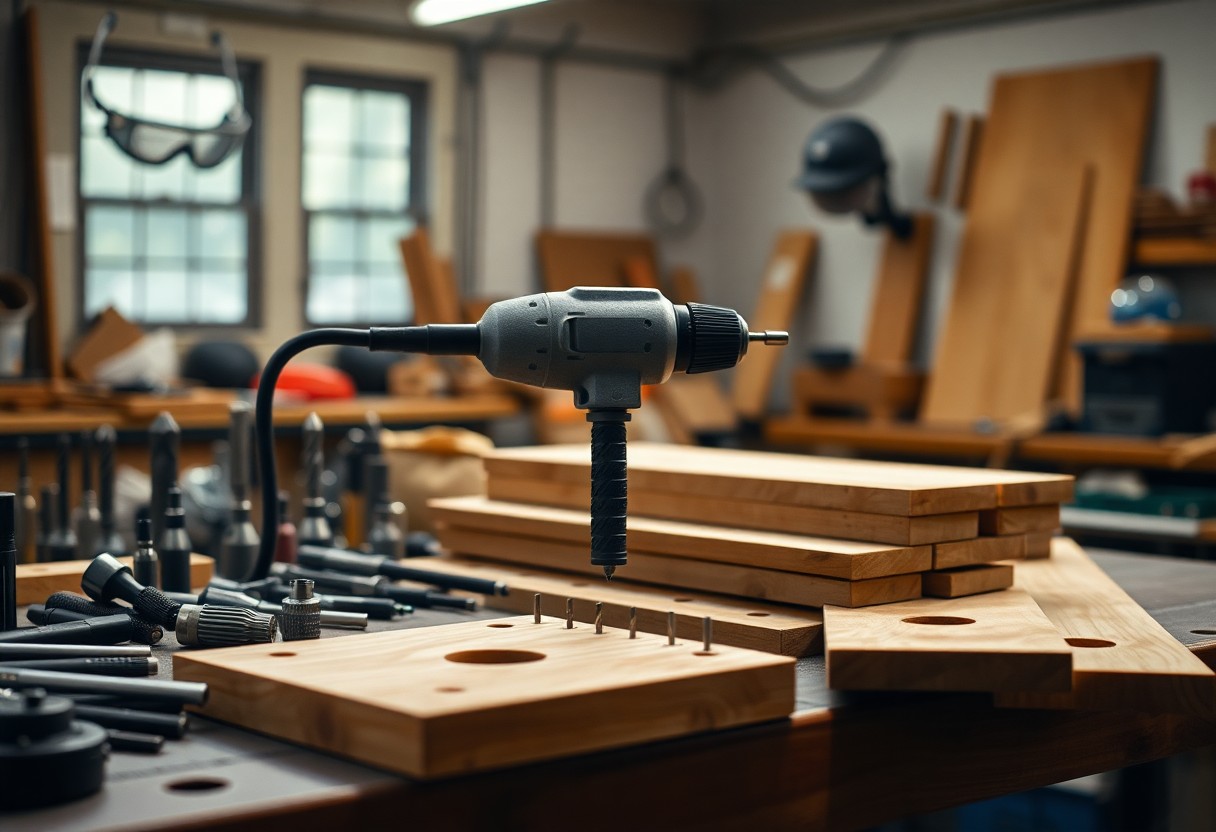Top Tips For Using A Rotary Drill Effectively
Tips for using a rotary drill effectively can enhance not only the quality of your work but also your safety during projects. Start by investing in the right drill bits and maintaining your equipment to ensure smooth operation. Always hold the drill firmly, keeping it at the correct angle to prevent slippage and reduce the risk of injury. When drilling into hard materials, apply consistent pressure without forcing the tool, as this could lead to overheating or damaging both the bit and the surface. Follow these guidelines to elevate your skills and achieve better results in your DIY tasks.
Contents
- Understanding the Rotary Drill
- How a Rotary Drill Works
- Key Features to Consider
- Choosing the Right Bits
- Types of Drill Bits
- Matching Bits to Your Project
- Preparing Your Workspace
- Safety Precautions
- Setting Up Your Work Area
- Operating Techniques for Efficiency
- Proper Grip and Control
- Techniques for Different Materials
- Maintenance and Care
- Cleaning Your Rotary Drill
- Troubleshooting Common Issues
- Tips for Advanced Users
- Enhancing Precision and Accuracy
- Utilizing Accessories for Versatility
- Summing up
Understanding the Rotary Drill
While rotary drills are versatile and important tools for various DIY projects and professional tasks, grasping their fundamental operation allows you to maximize their potential. They come in different models, each designed for specific functions—making it important to understand how they work to select the right one for your needs.
How a Rotary Drill Works
If you’re using a rotary drill, it’s important to know that its efficiency comes from a motor that spins a drill bit at high speeds. This spinning motion allows the tool to penetrate various materials, from wood to metal, creating holes for screws and dowels or for any other tasks requiring precision drilling.
Key Features to Consider
On your journey to selecting the perfect rotary drill, consider these vital features to enhance your drilling experience:
- Power – Higher wattage results in better performance.
- Speed – Adjustable speeds provide flexibility for different materials.
- Chuck Size – A larger chuck can handle a wider range of bits.
- Weight – A lighter drill reduces fatigue during extended use.
- Battery Life (for cordless models) – Longer battery life allows for uninterrupted work.
This combination of features ensures you have an effective tool at your disposal.
To further enhance your selection of a rotary drill, additional aspects to evaluate include:
- Ergonomics – A comfortable grip improves control and reduces strain.
- Durability – Quality components ensure longevity and reliable performance.
- Accessory Compatibility – Compatibility with various attachments enhances versatility.
- Safety Features – Look for drills with built-in protections to minimize risks.
This careful consideration of features will greatly contribute to your project’s success and the longevity of your tool.

Choosing the Right Bits
Clearly, selecting the appropriate drill bit is vital for maximizing your rotary drill’s efficiency. With various types available, understanding their unique functions enables you to achieve precise results and avoid frustrations during your projects.
Types of Drill Bits
Little bit types exist to suit different materials and tasks, ensuring you have the right tool for the job. Here’s a quick overview:
| Bit Type | Material & Use |
| Twist Bit | Wood, plastic, metal |
| Spade Bit | Wood, large holes |
| Forstner Bit | Flat-bottomed holes, wood |
| Masonry Bit | Brick, concrete |
| Auger Bit | Deep wood holes |
After understanding the various types, you’ll be better prepared to tackle any drilling task effectively.
Matching Bits to Your Project
An effective drilling project starts with matching the correct bit to your specific materials and tasks. Each material requires a tailored approach to achieve the best results, ensuring smooth operation and reducing wear on both the bit and the drill.
Right now, it’s vital for you to consider the material you’re working with when choosing your drill bits. For instance, using a standard twist bit on masonry can lead to inefficiency and potential damage to both your tool and the workpiece. If your project involves hard materials such as metal or concrete, opting for tougher bits like masonry or titanium will enhance your performance. Always ensure you’re equipped with the right tools to keep your projects safe and efficient, as being well-prepared can drastically improve your output.
Preparing Your Workspace
It is necessary to prepare your workspace properly before you start using a rotary drill. A clean and organized area will not only enhance your efficiency but also minimize the risk of accidents. Ensure that you have ample lighting, a sturdy work surface, and enough space to maneuver your tools. Clear away distractions and hazardous materials that could potentially lead to incidents while you work. Note, a well-prepared workspace sets the tone for a successful project.
Safety Precautions
Assuming you want to keep accidents at bay, it’s vital to prioritize safety precautions before using a rotary drill. Wear appropriate personal protective equipment, such as safety glasses and gloves, to guard against flying debris and sharp objects. Keep your hair and loose clothing secured and ensure the area is free from bystanders. Evaluating your equipment for any potential faults can also prevent unexpected mishaps.
Setting Up Your Work Area
Workspace layout can significantly affect your drilling experience, so take the time to set it up correctly. Ensure your work area is free of clutter and organized for efficiency, placing all necessary tools within reach. A sturdy surface will allow you to maintain stability while drilling and help prevent accidents. If you are using a workbench, securing your material with clamps will provide additional safety. Avoid working in cramped spaces, as they can lead to mistakes; instead, opt for a well-ventilated area with enough room to move around. To enhance safety further, keep hazardous materials such as paint or solvents away from your work zone. Understanding how to set up your workspace effectively not only enhances productivity but also creates a safer environment for you to work in.
Operating Techniques for Efficiency
For optimal results with a rotary drill, understanding its operating techniques is key to enhancing your efficiency. You should focus on maintaining a steady pace and applying consistent pressure to ensure matched speed and torque. Additionally, adjusting the drill speed based on the material type will significantly improve the drilling process, leading to cleaner holes and longer tool life.
Proper Grip and Control
Assuming you have a firm grip on the tool, it is necessary to maintain control while drilling. Use both hands to hold the drill to stabilize it and reduce the risk of slips or jerks. Position your body to align with the drill bit’s angle, which will help you apply even pressure and make it easier to follow through on your drilling tasks.
Techniques for Different Materials
On varying materials, the appropriate techniques can greatly impact your drilling success. You must adapt your drilling speed and pressure when transitioning between different surfaces, such as wood, metal, or masonry, optimizing your approach for each material’s unique properties.
Different materials require tailored approaches for effective drilling. When working with wood, you can use higher speeds and lower pressure, which promotes quick penetration without splintering. In contrast, metal necessitates slower speeds and increased pressure for efficient cutting; consider using a lubricant to reduce heat generation. Masonry demands a hammer drill mode to break through tougher surfaces, so ensure you select the right bit to tackle the task at hand. By adapting your techniques, you enhance your safety and achieve more professional-grade results.
Maintenance and Care
All rotary drills require consistent maintenance to ensure they operate efficiently. Keeping your drill in top condition helps extend its lifespan and improves performance. Regularly check the power cord and plug for any signs of wear and ensure that your drill bits are sharpened and free from debris. This proactive approach will help you avoid unexpected downtime and promote safe usage.
Cleaning Your Rotary Drill
Assuming you want to keep your rotary drill in prime working condition, cleaning is imperative. After each use, remove dust and debris from the drill body and air vents using a soft brush or compressed air. Additionally, wipe down the chuck with a clean cloth to prevent any build-up from affecting performance. Regular maintenance of your rotary drill ensures its longevity.
Troubleshooting Common Issues
Issues with your rotary drill can arise from various factors, making it imperative to know how to troubleshoot effectively. If the drill does not start, check the power source and make sure the trigger is not stuck. A defective bit may cause difficulty in drilling, so inspect and replace if necessary. Unusual noises could suggest that internal parts require lubrication or maintenance. Being proactive can prevent these minor issues from escalating.
It’s important to take note of your rotary drill’s behavior during operation. If you encounter excessive vibration, it might indicate that the bit is dull or improperly installed; sharp bits can cut smoothly and lessen the stress on the drill. Additionally, if your drill runs hot, it may need a break to cool down, or it could be an indication of mechanical failure. Addressing these concerns early can help avoid more serious damage, ensuring that your rotary drill remains a reliable tool for all your projects.

Tips for Advanced Users
Many experienced users of rotary drills can take their skills to the next level by integrating effective techniques that enhance performance. Consider these tips:
| Tip | Description |
|---|---|
| 1. Use a Depth Stop | Ensure consistent drilling depths for precision work. |
| 2. Experiment with Speed Settings | Adjust RPM for different materials to improve results. |
| 3. Maintain Your Drill | Regular maintenance prolongs tool life and performance. |
| 4. Clamp Your Workpiece | Stabilizing pieces enhances accuracy and safety. |
Enhancing Precision and Accuracy
Enhancing your drilling precision is vital in advanced projects. Utilize a speed control feature and avoid applying excessive pressure during operation to achieve cleaner holes. Additionally, marking your drill points with a center punch can guide your bit to prevent wandering, contributing to the overall accuracy of your work.
Utilizing Accessories for Versatility
Clearly, using the right accessories can elevate your rotary drilling projects. Accessories like different bits, drill guides, and attachments allow you to tailor your tool for various tasks, increasing its functionality.
To maximize utility with your rotary drill, explore various accessories such as different bit types for distinct materials, drill guides for guided accuracy, and specialty attachments like sanding drums or polishing pads. This not only boosts versatility but also streamlines your efforts for different applications, ensuring you achieve optimal results. By investing in quality accessories, you enhance the performance of your drill significantly, making it adaptable for both amateur and professional tasks.
Summing up
Following this guide will enhance your effectiveness when using a rotary drill. With the right techniques, the appropriate drill bits, and a focus on safety, you can achieve precise and powerful results in your projects. Always ensure you select the proper speed and pressure for your materials, and don’t hesitate to practice on scrap pieces. By mastering these tips, you’ll not only improve your drilling skills but also increase your confidence in handling various tasks with ease.